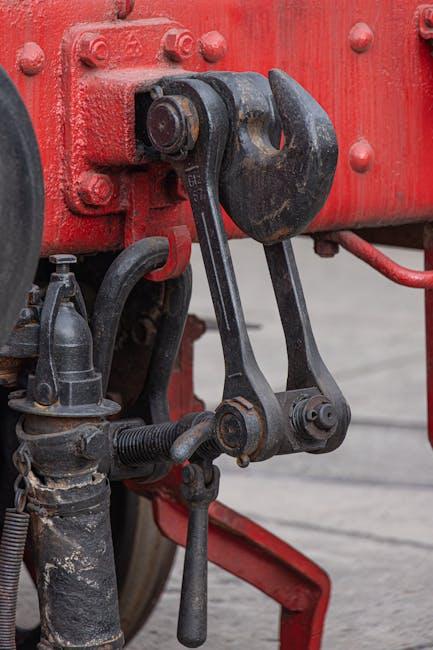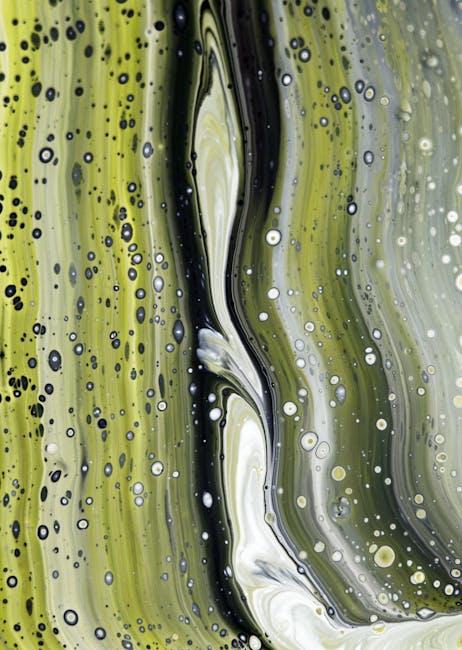Brake fluid is the lifeblood of your vehicle’s braking system, quietly ensuring every stop is as smooth and safe as possible. Over time, however, this vital fluid can become contaminated or lose its effectiveness, risking your safety on the road. Knowing how to flush and replace brake fluid isn’t just a handy skill—it’s an essential part of vehicle maintenance that can extend the life of your brakes and keep you confidently in control. In this article, we’ll guide you through the straightforward steps to refresh your brake fluid, helping you maintain a critical component of your car’s safety system with confidence and care.
Table of Contents
- Preparing Your Vehicle and Tools for a Safe Brake Fluid Flush
- Understanding the Importance of Fresh Brake Fluid for Optimal Performance
- Step-by-Step Guide to Draining Old Brake Fluid from Your System
- Selecting the Right Brake Fluid to Match Your Vehicle’s Specifications
- How to Properly Refill and Bleed the Brake Lines to Avoid Air Locks
- Final Checks and Maintenance Tips to Ensure Long-Lasting Brake Efficiency
- Q&A
- Closing Remarks

Preparing Your Vehicle and Tools for a Safe Brake Fluid Flush
Before diving into the brake fluid flush, ensuring your vehicle is properly prepped is crucial for both safety and efficiency. Start by parking your car on a flat surface and engage the parking brake to prevent any movement during the procedure. It’s also wise to wear protective gloves and safety glasses as brake fluid is corrosive and can damage your skin or eyes. Lay down absorbent mats or old towels beneath the work area to catch any drips, keeping your workspace clean and preventing damage to your garage floor.
Gathering the right tools before you start will save you time and frustration. You’ll want to have the following items ready at hand:
- Brake fluid suitable for your vehicle (check the owner’s manual for specifications)
- A clear plastic hose and a catch container
- A brake bleeder wrench or the appropriate spanner
- Jack and jack stands for safe wheel removal
- Clean rags and a funnel
Having everything organized allows for a smooth and safe process, minimizing the risk of contamination or mistakes during the flush.

Understanding the Importance of Fresh Brake Fluid for Optimal Performance
Brake fluid is the heartbeat of a vehicle’s braking system, transmitting the force from your foot on the pedal to the brake pads that slow the wheels. Over time, this vital fluid absorbs moisture from the air, leading to a decrease in its boiling point and, consequently, its effectiveness. Moisture-contaminated brake fluid not only compromises stopping power but also accelerates corrosion within the brake lines and components. This is why regularly maintaining fresh brake fluid is critical for delivering consistent responsiveness and maximized safety.
Ensuring your brake fluid stays within optimal performance parameters involves more than just topping it off occasionally. A thorough flush is essential to remove old fluid, debris, and absorbed humidity. Benefits of fresh brake fluid include:
- Enhanced hydraulic pressure transmission for smoother braking
- Reduced risk of vapor lock under intense braking conditions
- Extended lifespan of internal braking components by preventing corrosion
Think of brake fluid as a vital energy carrier—keeping it pure sustains your vehicle’s health and preserves your peace of mind every time you hit the road.

Step-by-Step Guide to Draining Old Brake Fluid from Your System
Begin by locating the brake fluid reservoir under the hood; this is typically a translucent container marked with a brake symbol. Before opening the cap, use a turkey baster or a similar tool to remove as much old fluid as possible to minimize spillage. Then, safely jack up the vehicle and remove the wheels to access the brake calipers. Attach a clear plastic hose to the brake caliper’s bleeder valve and place the other end into a container to catch the fluid. When ready, have an assistant slowly press the brake pedal while you open the bleeder valve with a wrench—this encourages the old fluid to flow out. Remember to keep the reservoir cap loosely on to prevent air from entering the system.
- Wear gloves and safety glasses to protect your skin and eyes.
- Maintain a steady pace when bleeding brakes to avoid introducing air pockets.
- Dispose of old brake fluid responsibly, as it is hazardous waste.
Continue this process at each wheel, ensuring that fresh fluid continuously replaces the old. It’s crucial to monitor the brake fluid reservoir and top it up frequently during the procedure to prevent it from running dry. Check the brake pedal for firmness as an indicator that all air has been purged from the system. Once the process is complete, tighten all bleeder valves securely and perform a final inspection for leaks. This meticulous routine will ensure your braking system is safe, responsive, and free of contaminated fluid.
| Step | Action | Tip |
|---|---|---|
| 1 | Remove old fluid from reservoir | Use a turkey baster |
| 2 | Attach hose to bleeder valve | Use clear plastic tubing |
| 3 | Press brake pedal while opening valve | Have an assistant help |
| 4 | Top up reservoir regularly | Prevent air from entering |

Selecting the Right Brake Fluid to Match Your Vehicle’s Specifications
Choosing the appropriate brake fluid is crucial for maintaining your vehicle’s braking performance and safety. Not all brake fluids are created equal; they differ in chemical composition and boiling points, which directly impact their function under various driving conditions. Always consult your vehicle’s owner manual to identify the recommended brake fluid type. Typically, you’ll encounter DOT 3, DOT 4, and DOT 5.1 fluids, each designed for specific performance and temperature ranges. Using the wrong fluid can lead to brake failure, corrosion in the braking system, or damage to internal components.
When selecting brake fluid, consider the following factors:
- Compatibility: Ensure the fluid matches the material of your brake system seals and components.
- Boiling Point: Higher boiling points are essential for extreme temperatures or heavy braking.
- Water Absorption: Brake fluids absorb moisture over time, which lowers their boiling point and reduces effectiveness.
- Viscosity: Affects fluid flow, especially in ABS and electronic systems.
| Brake Fluid Type | Typical Usage | Dry Boiling Point | Wet Boiling Point |
|---|---|---|---|
| DOT 3 | Standard passenger cars | 205°C (401°F) | 140°C (284°F) |
| DOT 4 | High-performance vehicles | 230°C (446°F) | 155°C (311°F) |
| DOT 5.1 | Racing and heavy-duty | 270°C (518°F) | 180°C (356°F) |

How to Properly Refill and Bleed the Brake Lines to Avoid Air Locks
Ensuring the brake lines are properly refilled demands a meticulous approach to prevent any air pockets from compromising your braking system. Begin by using a clear container to catch old brake fluid, and continuously top off the master cylinder reservoir with fresh fluid to maintain a constant level. When opening the brake bleeder valves, keep these key steps in mind:
- Start with the wheel farthest from the master cylinder (typically the passenger rear), progressing towards the closest.
- Use a proper wrench on the bleeder valve, loosening it just enough to let fluid escape without fully removing it.
- Have an assistant pump the brake pedal slowly to push old fluid and air bubbles out, then hold the pedal down while you tighten the valve again.
Avoiding air locks involves patience and an organized sequence. If the pedal feels spongy, it’s a clear sign you need to repeat the bleeding process. Keep the reservoir topped off throughout to prevent fresh air from entering. Remember, the quality of your brake fluid matters; always use fluid recommended by your vehicle’s manufacturer. A simple troubleshooting table below can help you diagnose common bleeding issues efficiently:
| Symptom | Cause | Solution |
|---|---|---|
| Spongy Brake Pedal | Air trapped in brake lines | Repeat bleeding cycle, ensure proper sequence |
| Brake Pedal Drops to Floor | Brake fluid leak or continued air ingress | Inspect for leaks, refill fluid, bleed again |
| Brakes Feel Hard and Unresponsive | Brake booster failure or blockage | Check booster and master cylinder function |

Final Checks and Maintenance Tips to Ensure Long-Lasting Brake Efficiency
After completing the brake fluid flush and replacement, it’s crucial to perform a series of final inspections to guarantee optimal performance. Begin by checking for any leaks around the brake lines and master cylinder. Even the smallest drip can compromise the hydraulic pressure, so tighten any loose connections. Next, ensure the brake fluid reservoir is filled to the recommended level, demarcated by the “MIN” and “MAX” indicators. It’s also wise to pump the brake pedal lightly a few times to help distribute the new fluid throughout the system, restoring proper responsiveness and preventing air pockets that may cause spongy brakes.
To keep your braking system in top shape between fluid changes, incorporate these simple maintenance habits:
- Inspect brake pads & rotors: Regular wear checks prevent costly repairs and maintain stopping power.
- Monitor fluid color: Brake fluid should be clear or slightly yellow; dark, murky fluid signals contamination.
- Store brakes properly: When parking long-term, engage the handbrake lightly to avoid seizing.
- Schedule routine flushes: Follow manufacturer guidelines, typically every 2 years or 30,000 miles.
| Maintenance Task | Recommended Frequency | Benefit |
|---|---|---|
| Brake Fluid Replacement | Every 2 years | Prevents moisture buildup & corrosion |
| Brake Pad Inspection | Every 10,000 miles | Maintains braking efficiency |
| Rotor Surface Check | During pad inspection | Ensures smooth braking & longevity |
Q&A
Q&A: How to Flush and Replace Brake Fluid
Q1: Why is it important to flush and replace brake fluid?
A1: Brake fluid is the lifeblood of your vehicle’s braking system. Over time, it absorbs moisture, which can lead to corrosion, reduced braking efficiency, and even brake failure. Flushing and replacing brake fluid ensures your brakes remain responsive and safe, maintaining optimal stopping power.
Q2: How often should brake fluid be changed?
A2: Typically, brake fluid should be flushed and replaced every 2 to 3 years, or according to your vehicle manufacturer’s recommendations. Regular intervals prevent moisture buildup and maintain brake system integrity.
Q3: What tools do I need to flush and replace brake fluid?
A3: You’ll need fresh brake fluid (consult your vehicle’s manual for the type), a clear hose, a wrench to open the bleeder valves, a brake fluid suction pump or turkey baster to remove old fluid, a catch container, a jack and jack stands, gloves, and safety glasses. Clean rags and a friend to help can make the job easier.
Q4: Can I use any brake fluid for replacement?
A4: Not all brake fluids are created equal. Use the specific type recommended in your vehicle’s manual — usually DOT 3, DOT 4, or DOT 5.1. Using the wrong fluid can damage your braking system.
Q5: What’s the general process for flushing and replacing brake fluid?
A5: First, safely lift and secure the vehicle. Remove the cap from the master cylinder reservoir and use a syringe or suction tool to remove old fluid. Refill with fresh brake fluid. Starting with the wheel farthest from the master cylinder (usually the rear passenger side), attach a clear hose to the bleeder valve and submerge the other end in a catch container. Have your helper press the brake pedal gently while you open the bleeder valve to let old fluid and air escape. Close the valve before they release the pedal. Repeat for each wheel until fresh, clear fluid flows.
Q6: How do I know when the brake fluid flush is complete?
A6: When the fluid running through the hose looks clear and free of bubbles, and the brake pedal feels firm under pressure, the flush is complete. Avoid allowing the master cylinder reservoir to run dry during the process to prevent introducing air into the system.
Q7: Are there any precautions to take during this process?
A7: Yes. Brake fluid is corrosive and can damage paint, so handle it carefully and wipe up any spills immediately. Always wear gloves and eye protection. Dispose of old brake fluid properly — never pour it down drains or on the ground.
Q8: Can I do this myself, or should I see a professional?
A8: If you’re comfortable with basic vehicle maintenance and have a helper, you can flush and replace your brake fluid at home with patience and care. However, if you’re unsure of the process or lack the right tools, it’s wise to seek professional assistance to ensure your brakes remain safe and effective.
Flushing and replacing brake fluid might not be the flashiest car job, but it’s a crucial step for your safety and peace of mind. Keep your brake fluid fresh, and your vehicle will thank you every time you hit the brakes.
Closing Remarks
Flushing and replacing your brake fluid may not be the flashiest part of car maintenance, but it’s undeniably one of the most crucial. A clean brake system ensures that every press of the pedal translates into reliable stopping power, keeping you safe on every journey. With the right tools, a bit of patience, and a clear step-by-step approach, this task is well within reach for anyone willing to get their hands a little dirty. So, take the time to give your brake fluid the attention it deserves—it’s a small investment that pays off with peace of mind on the road ahead.
